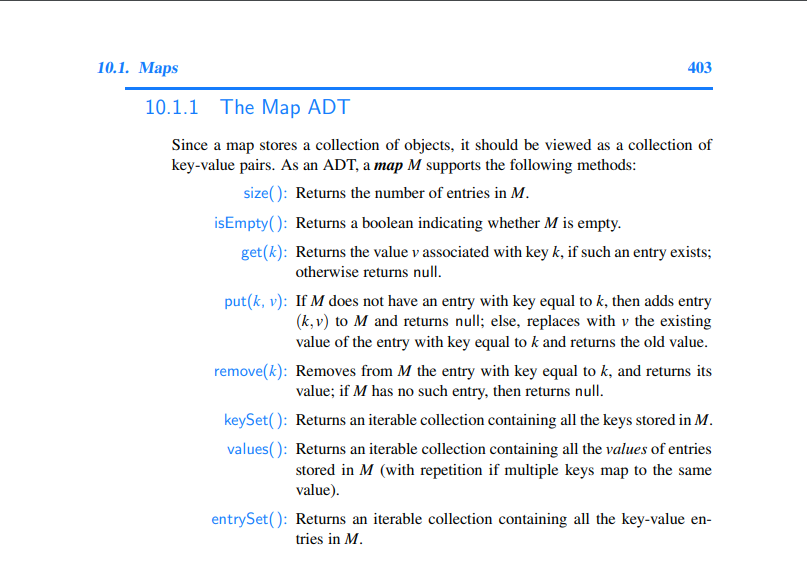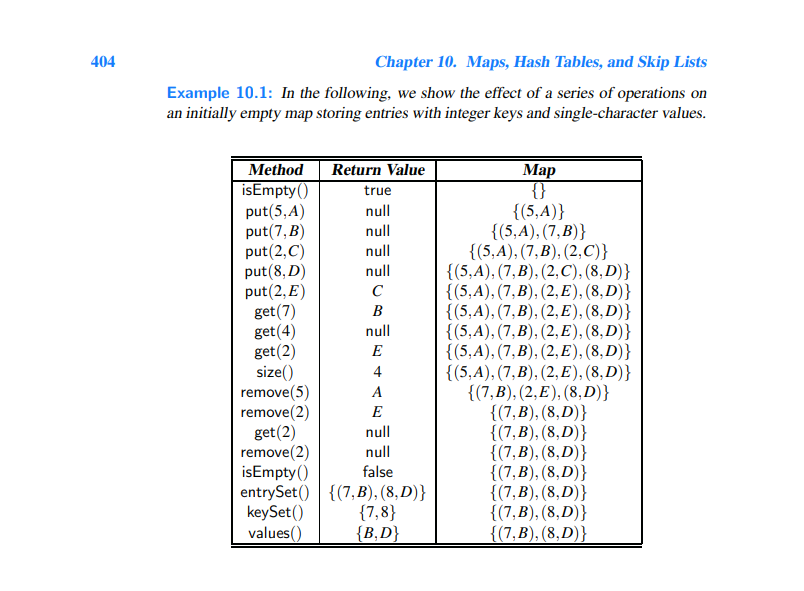Home /
Expert Answers /
Computer Science /
in-java-implement-the-map-adt-based-on-separate-chaining-hash-table-which-is-in-section-10-2-2-t-pa176
(Solved): IN JAVA, implement the Map ADT based on Separate Chaining Hash Table., which is in Section 10.2.2. T ...
IN JAVA, implement the Map ADT based on Separate Chaining Hash Table., which is in Section 10.2.2. That means implementing all the 8 functions based on Separate Chaining Hash Table and run your codes on Example 10.1. Your program should print out that table in Example 10.1.
Since a map stores a collection of objects, it should be viewed as a collection of cey-value pairs. As an ADT, a map supports the following methods: size( ): Returns the number of entries in . isEmpty (): Returns a boolean indicating whether is empty. get : Returns the value associated with key , if such an entry exists; otherwise returns null. : If does not have an entry with key equal to , then adds entry to and returns null; else, replaces with the existing value of the entry with key equal to and returns the old value. remove : Removes from the entry with key equal to , and returns its value; if has no such entry, then returns null. keySet( ): Returns an iterable collection containing all the keys stored in . values( ): Returns an iterable collection containing all the values of entries stored in (with repetition if multiple keys map to the same value). entrySet(): Returns an iterable collection containing all the key-value entries in .
A simple and efficient way for dealing with collisions is to have each bucket store its own secondary container, holding all entries such that . A natural choice for the secondary container is a small map instance implemented using an unordered list, as described in Section 10.1.4. This collision resolution rule is known as separate chaining, and is illustrated in Figure 10.6. Figure 10.6: A hash table of size 13, storing 10 entries with integer keys, with collisions resolved by separate chaining. The compression function is 13. For simplicity, we do not show the values associated with the keys.
Example 10.1: In the following, we show the effect of a series of operations on an initially empty map storing entries with integer keys and single-character values.
Expert Answer
answer:-This is a java program , which is performing all the operation as given in question.import java.util.*; public class M { public static void

![A simple and efficient way for dealing with collisions is to have each bucket \( A[j] \) store its own secondary container, h](https://media.cheggcdn.com/media/98f/98fb0f7a-1c04-43d6-8141-38e23e99c5ee/php5k0gXt)
